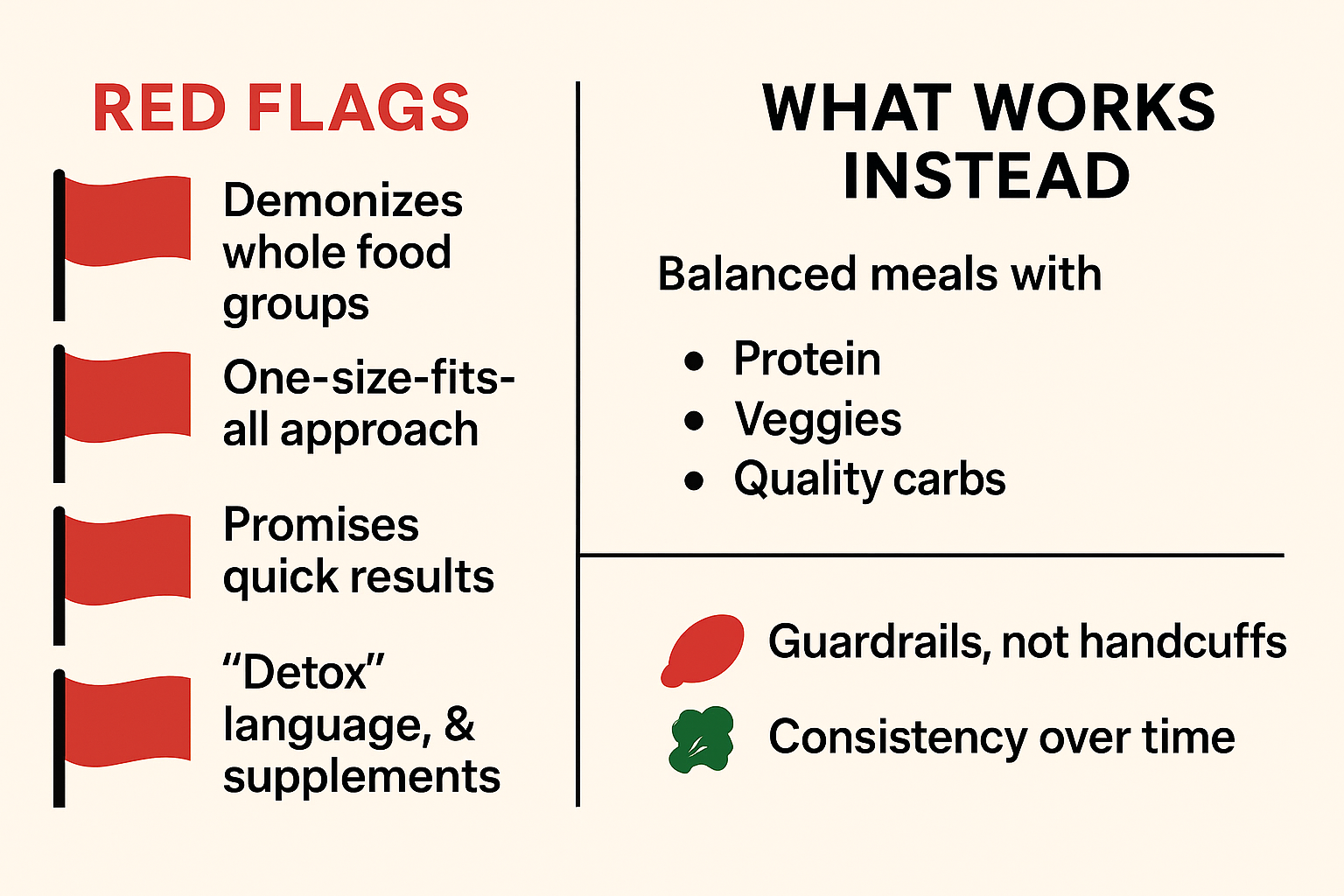Fad Diets: Red Flags, Real Risks, and What Actually Works


Every few months, a new “miracle” plan hits the headlines: cut all carbs and melt fat overnight, drink only juices to “detox,” or follow rigid macro ratios that supposedly hack your metabolism.
These are the hallmarks of fad diets—short-term, highly restrictive approaches that oversimplify how the body really works.
Fad diets thrive because they’re simple and seductive.
When life feels complicated, a plan with strict rules and bold promises feels like relief.
But the truth is, what starts as motivation often ends in frustration once the novelty wears off—or when real life gets in the way.
Most fad diets share a predictable pattern. Watch out for any plan that:
If a diet can’t adapt to real life—or if it feels like punishment—it’s not sustainable.
Fad diets don’t just fail long-term; they can actually harm your health and performance.
Common consequences include:
The result? Most people regain the weight they lost—plus a little more—once the diet ends.
The opposite of a fad isn’t “no plan.” It’s a smart, flexible framework that fits your goals and lifestyle.
A sustainable nutrition plan should include:
And most importantly—it should be something you can see yourself maintaining for 90 days or longer.
At FitSix, we prefer guardrails, not handcuffs.
Build your meals around a protein source, add fruits or vegetables, include quality carbs and healthy fats, and adjust portion sizes based on your goals.
No detoxes, no gimmicks—just consistent, flexible habits that protect lean mass, fuel performance, and work in real life.
Quick fixes create quick rebounds.
Fad diets might deliver short-term weight loss, but they do nothing for long-term health, strength, or confidence.
If you want lasting results, skip the extremes.
Choose structure that supports your training, flexibility that fits your lifestyle, and a mindset focused on consistency over perfection.
That’s what actually works.